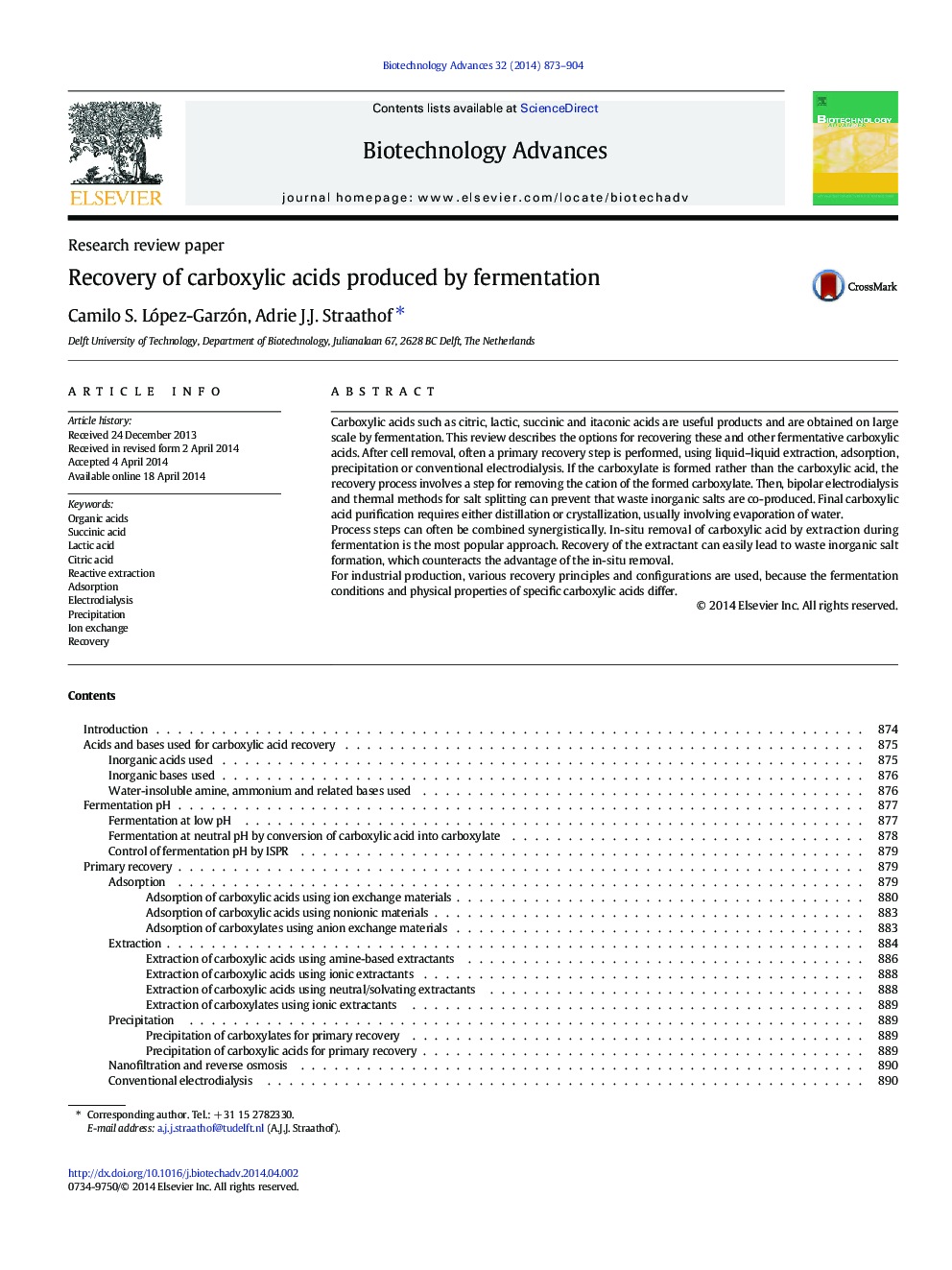| Article ID | Journal | Published Year | Pages | File Type |
|---|---|---|---|---|
| 14294 | Biotechnology Advances | 2014 | 32 Pages |
Carboxylic acids such as citric, lactic, succinic and itaconic acids are useful products and are obtained on large scale by fermentation. This review describes the options for recovering these and other fermentative carboxylic acids. After cell removal, often a primary recovery step is performed, using liquid–liquid extraction, adsorption, precipitation or conventional electrodialysis. If the carboxylate is formed rather than the carboxylic acid, the recovery process involves a step for removing the cation of the formed carboxylate. Then, bipolar electrodialysis and thermal methods for salt splitting can prevent that waste inorganic salts are co-produced. Final carboxylic acid purification requires either distillation or crystallization, usually involving evaporation of water.Process steps can often be combined synergistically. In-situ removal of carboxylic acid by extraction during fermentation is the most popular approach. Recovery of the extractant can easily lead to waste inorganic salt formation, which counteracts the advantage of the in-situ removal.For industrial production, various recovery principles and configurations are used, because the fermentation conditions and physical properties of specific carboxylic acids differ.
